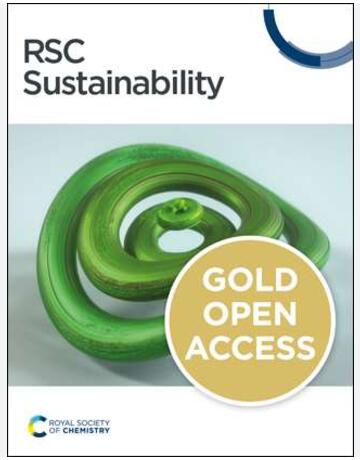Life Cycle Assessment of Greenhouse Gas Emissions from Recycled Asphalt Pavement Production
IF 3.3
3区 环境科学与生态学
Q2 ENVIRONMENTAL SCIENCES
引用次数: 5
Abstract
With the growing impact of climate change, there is an increasing need and obligation to reduce the responsible greenhouse gases (GHG) in road construction as well. Using life cycle assessment (LCA) methods, several studies have already separately analysed individual parameters of the asphalt production process and illustrated potential improvements in terms of GHG reduction. However, the data of most assessments originate from single sources and databases, and as such can offer little validation against unreliable assumptions. For this reason, in addition to conducting separate assessments at quarries, batch asphalt mixing plants, and construction sites in order to collect energy and material consumption data with which to calculate GHG emissions, this work relies on the results of multiple sources found in the literature. Using the structure for environmental product declarations (EPDs) in EN 15804, our results are divided into the different stages of a life cycle and the corresponding modules. This allows for systematic comparison of different products and eliminates previous uncertainties regarding the inclusion of benefits beyond the system boundary. The results show the dominance of asphalt binder in the material footprint and the corresponding advantage of substituting virgin material with recycled material, as well as the influence of material moisture on GHG emissions in the production process. In addition to the evaluating the material itself, two road sections with increasing traffic volume (and increasing share of electric mobility) were examined and compared with the traffic-related GHG emissions over a 30-year lifetime. We can confirm that traffic has a substantially higher share of the total GHG emissions (>95%); however, as its regulation is the responsibility of governments, the construction industry can only bring about improvements in its own sphere in seeking to further climate protection.再生沥青路面生产温室气体排放的生命周期评估
随着气候变化的影响越来越大,减少道路建设中负责任的温室气体(GHG)的需求和义务也越来越大。使用生命周期评估(LCA)方法,几项研究已经分别分析了沥青生产过程的各个参数,并说明了在减少温室气体方面的潜在改进。然而,大多数评估的数据来源于单一的来源和数据库,因此很少能对不可靠的假设进行验证。因此,除了在采石场、沥青拌合厂和建筑工地进行单独评估,以收集能源和材料消耗数据来计算GHG排放外,这项工作还依赖于文献中发现的多种来源的结果。使用EN 15804中的环境产品声明(EPD)结构,我们的结果被划分为生命周期的不同阶段和相应的模块。这允许对不同的产品进行系统的比较,并消除了之前关于包含系统边界之外的利益的不确定性。结果表明,沥青结合料在材料足迹中占主导地位,用再生材料替代原始材料具有相应的优势,以及材料水分对生产过程中GHG排放的影响。除了对材料本身进行评估外,还对交通量不断增加(电动交通份额不断增加)的两个路段进行了检查,并与30年使用寿命内与交通相关的GHG排放量进行了比较。我们可以确认,交通在温室气体排放总量中所占的份额要高得多(>95%);然而,由于其监管是政府的责任,建筑业只能在寻求进一步气候保护的过程中改善自己的领域。
本文章由计算机程序翻译,如有差异,请以英文原文为准。
求助全文
约1分钟内获得全文
求助全文
来源期刊

Sustainability
ENVIRONMENTAL SCIENCES-ENVIRONMENTAL SCIENCES
CiteScore
6.80
自引率
20.50%
发文量
14120
审稿时长
17.72 days
期刊介绍:
Sustainability (ISSN 2071-1050) is an international and cross-disciplinary scholarly, open access journal of environmental, cultural, economic and social sustainability of human beings, which provides an advanced forum for studies related to sustainability and sustainable development. It publishes reviews, regular research papers, communications and short notes, and there is no restriction on the length of the papers. Our aim is to encourage scientists to publish their experimental and theoretical research relating to natural sciences, social sciences and humanities in as much detail as possible in order to promote scientific predictions and impact assessments of global change and development. Full experimental and methodical details must be provided so that the results can be reproduced.
 求助内容:
求助内容: 应助结果提醒方式:
应助结果提醒方式:


